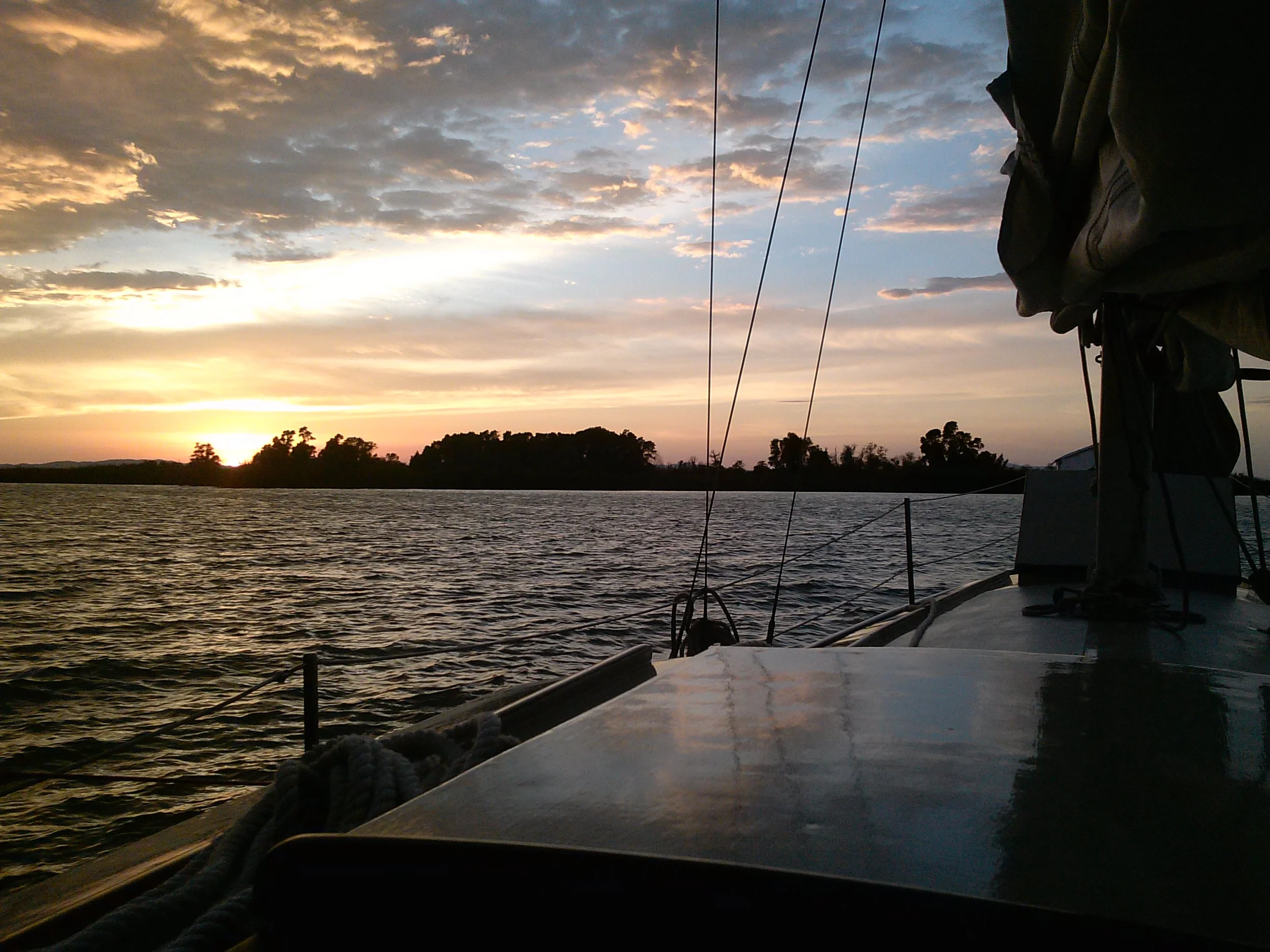Where's Nirvana? The tale of a year spent dockside.
/Its been more than a year since I pulled the dip stick out of Nirvana's Gray Marine 4-112 engine and found it covered in a gray smoothy.
Water and oil don't mix. Well, apparently, except when they are together in an engine that has run for a while. Then you get a milkshake like substance. But it isn't sweet.
The engine still worked. Turned over and fired up just fine. Everyone was upbeat about it. Just pump the oil out, replace it, and see what happens. But the smoothy was too think. The first extractor pump couldn't pull it through the hose. After running the engine to heat the mixture, adding transmission fluid to thin it, and using a bigger, better extractor, was I able to drain it.
Maybe at that point I should have just filled it back up and run the engine till it died, really died.
Instead, I put into motion the process of trouble shooting it. Hopeful that maybe it was just a head gasket. After all, the engine had been rebuilt in 2010. Finding a mechanic who can, and will work on old marine gas engines isn't easy. Having found one, although officially retired, I felt lucky and a sense of urgency.
As the engine came apart at his shop in the California Gold Country, the reports weren't good. He didn't like what he was seeing. A total rebuild would be needed.
What options were there? We could try and replace it with a an existing rebuild, retro fit a "newer" generation gas engine like an Atomic 4, or switch to an even newer diesel. Each had advantages and disadvantages.
“My GM for the project warned me that the only thing more unpredictable than an old marine engine were the guys who worked on them.”
The 31 hp Gray Marine 4-112 is based on a Continental industrial engine which was designed for things like fork lifts, compressors, generators, welders, pumps, etc. They were meant to idle away the day at load in a compact size, and a relatively quite, cool manner. The Gray Motor Company, which operated from 1901 to 1967, built their own engines up through 1929, including engines that were used in WWI life boats and to pump out trenches in France.
After a failed attempt in building its own cars to compete with Ford in the 1920's, the marine engine division continued on by converting engines from a number of manufacturers. Gray Marines, both gas and diesel, were common in fishing boats, work boats, as sail and motor boat auxiliaries, life boats, and even powered the famous Higgins landing craft used throughout WWII.
Gray Marine was purchased by Continental Motors in 1944. The wide variety of Gray Marine engines in service, and the common parts shared with other industrial engines, seems to have kept them in service long after the brand was closed by Continental. To this day there remains a market for Gray Marine parts, mostly for classic runabouts and speed boats such as Chris-Crafts.
After scouring the internet, and posting on various chat boards, no replacement 4-112 could be found. But Van Ness Engineering in New Jersey had a re-machined block and all the parts for a rebuild, and so it was decided. The engine would be rebuilt. This would allow all the supporting systems to remain as is, simplifying the replacement process. The one upgrade to be made was the addition of a fresh water cooling system. Van Ness had supplied these before for the 4-112 and knew where to source the parts and make the custom brackets the additional pump would require.
My GM for the project warned me that the only thing more unpredictable than an old marine engine were the guys who worked on them. It would be an expensive process so I wasn't in a rush and figured a slow pace would help spread the cost over time. Weeks turned into months as parts were ordered, shipped, received, inspected, sorted and tinkered with. I didn't push. If a holiday was approaching, I'd wait for it to pass before sending out one of my gentile emails.
"Where are we?"
"Any progress?"
"How's it going?"
"Heard anything lately?"
"Any Update?"
My birthday in April passed.
The Master Mariner's Regatta in May passed.
The Master Mariner's Boat Show in June passed.
April 20, 2018. Rebuilt engine minus additional water pump.
By late May the rebuilt engine was at the yard and "all" that appeared to be missing was the extra water pump which had been ordered, but discontinued, and no one had figured that out while they were waiting around. A new pump was sourced. It was suppose to be mounted on the engine before the boat was towed the the yard. In hind sight, I should have inspected it to make sure.
The elusive 2nd water pump and custom sheave
The boat was towed to the yard on July 15, and the engine lowered in. It took 23 days to finish the job. The pump needed to be fitted, then a custom sheave needed to be made after failing to find one to fit. Then the battery was dead. Then the battery master switch need replacing. Then the GM was out of town. Pluming, wiring, heat exchanger, ignition.
Take off! On Aug 10 I motored out of the yard and towards Nirvana's berth in Alameda. Not quite sailing off into the sunset, but rather away from it to live on!
New engine, and the first sail in a year returning from the yard.
There is still work to do. The newly powerful engine seems to be too much for the older belt drive transmission, so new belts are in order. But first, lets go sailing!




